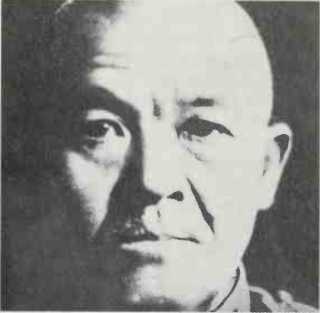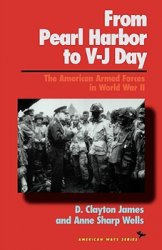Nagano, Adm Osami (1880-1947). Jap. Navy Minister, 1936; c-in-c Combined Fleet, 1937; Chief of Naval General Staff, April 1941— February 1944. Like Yamamoto, originally opposed attacking USA but then supported Pearl Harbor operation.
Nagasaki, atomic attack on. Following the atomic raid on Hiroshima (August 6 1945), President Truman threatened Japan with “a rain of ruin from the air, the like of which has never been seen on this earth”. However, this failed to elicit a Japanese surrender and the use of a second atomic bomb was agreed. Kolura, a city boasting a major arsenal, was selected as the primary target with the port of Nagasaki as the alternative.
Shortly before 0400 hours August 9 1945 the B-29 bomber Bock’s Car and its “Fat Man” bomb took off from Tinian. The pilot, Maj Charles Sweeney, was soon beset by problems; cloud over Kokura resulted in a switch to Nagasaki but a faulty fuel pump limited the aircraft’s flying time and only one bombing run was possible. The weather over Nagasaki was not good either and radar had to be used for the bomb run. Finally, a gap in the clouds appeared and, at 1058, from a height of 28,900ft (8,800m), “Fat Man” was released. This bomb, using the implosion method, was more efficient than “Little Boy” and possessed a greater blast effect. However, the fairly mountainous terrain, the irregularity of the city plan and the incidence of stretches of water helped to limit the devastation. Nevertheless, an area of almost 2 sq miles (5 sq km) was laid waste and substantial damage was sustained to buildings for a further mile from the epicentre of the explosion. As with Hiroshima, casualty statistics for Nagasaki vary greatly but a figure of 40,000 killed with a similar number wounded is generally accepted. The final total of those afflicted by the after-effects of radiation is also uncertain. MS.
Nagato. Japanese battleship. Name ship of class; with sister ship Mut-su, first Japanese 16in gun ships. Flagship of Combined Fleet until replaced by Yamato. Sunk at Bikini atomic tests (1946).
Nagumo, Vice Adm Chuichi
(1887—1944). Jap. A cruiser admiral specializing in torpedoes, Nagumo somewhat reluctantly took command of First Air Fleet,

Nagumo; commander at Pearl Harbor
Japan’s major carrier force, for the attack on Pearl Harbor, December
1941. Although he achieved complete surprise, his failure to launch a follow-up air strike - as Yamamoto had probably expected, but had not ordered, him to do — resulted in the base’s infrastructure remaining virtually intact. There followed five months’ unbroken success, as First Air Fleet covered the conquest of the Dutch East Indies and launched devastating raids on Darwin and Ceylon.
The limitations of Nagumo’s painstaking, conventional style of command were seen at Midway, June 1942. Ordered to destroy both the island’s defences and the US carriers - twin tasks made more difficult by Yamamoto’s overcautious deployments and Nagumo’s own failure to ensure adequate reconnaissance - he hesitated at the crucial moment and lost all four of his fleet carriers. His almost complete loss of confidence thereafter was manifested in his failure to exploit initial advantages at Eastern Solomons, August 1942, and Santa Cruz, October 1942. Handing over the main carrier force to Ozawa, November 1942, Nagumo was relegated to the minor Central Pacific Fleet. As senior officer in the Marianas, 1944, he jointly commanded the defence of Saipan with Lt Gen Yoshitsugo Saito. On July 6 1944, having ordered the garrison’s c3,000 surviving troops to make a banzai charge, Saito and Nagumo committed suicide. RO’N.
Nakajima Ki 43 Hayabusa (Peregrine Falcon), “Oscar” (Japanese, WWII). Single-seat fighter, Japanese Army Air Service specification. In action from December 7 1941. Production,
5,919. One 990hp Nakajima Ha-25 or l,150hp Ha-115 engine; max. speed 329mph (530kpb); two 12.7mm machine guns, 1,1021b (500kg) bombs.
Naktong river see pusan perimeter CAMPAIGN.
Nam Dong, Battle of (1964). In July 1964, Nam Dong was a Civilian Irregular Defence Group (cidg) camp in north central Thua Thien province, South Vietnam. Early on July 6, a communist battalion struck behind a mortar barrage, killing 58 cidg troops, two US Special Forces and one Australian adviser. The camp escaped being overrun (but only narrowly) partly because, having once been a French outpost, it had two defence perimeters around a central strongpoint. This design was later incorporated into all US Special Forces compounds.
Nam II, Gen (1914—82). Korean, cos of the NKPA during the Korean War and chief communist delegate at the truce talks in July 1951.
Namsi, Battle of (1951). Korean War. One of a series of clashes over northwest Korea in October 1951 involving B-29 Superfortresses and communist MiGs. On October 23 Superfortresses attacking Namsi airfield were engaged by a large force of MiGs which swamped' escorting fighters, destroyed three of the bombers and seriously damaged five. On October 24 another Superfortress was claimed by MiGs over Sunchon. On October 27 during a raid on Sinanju a Superfortress was seriously damaged. As a result, daylight bombing by Superfortresses ceased and a second wing of Sabres was rushed to Korea to preserve air supremacy in MiG Alley. CM.




 World History
World History









